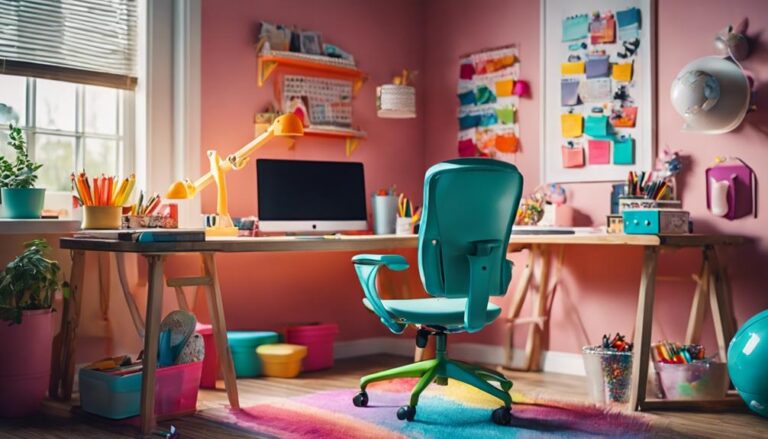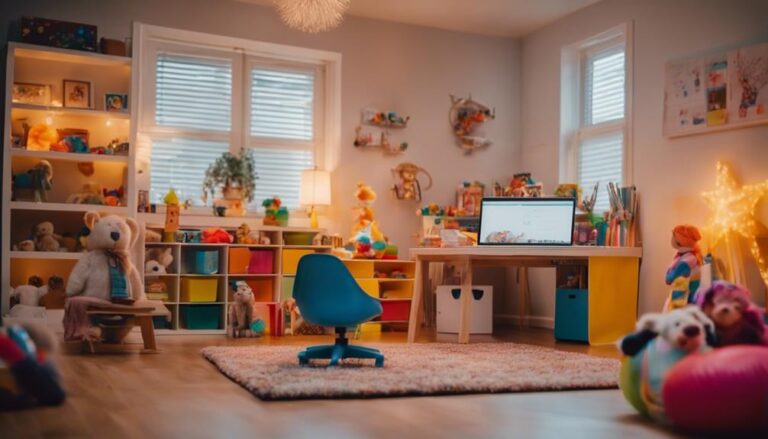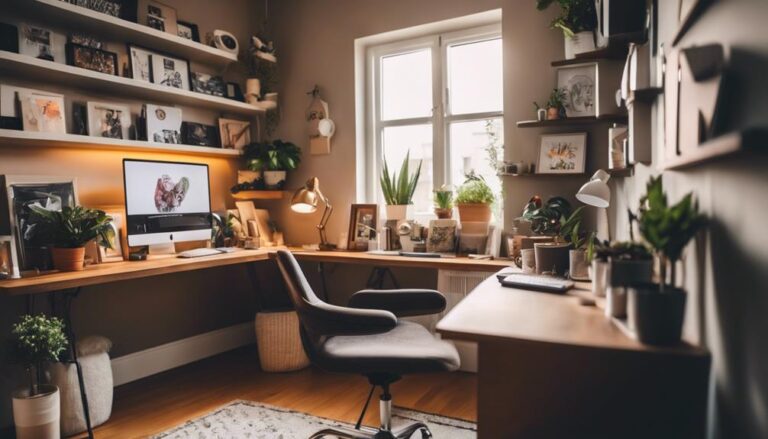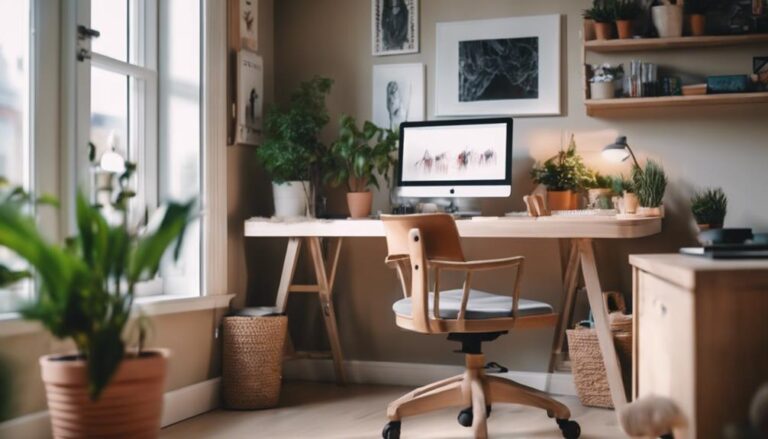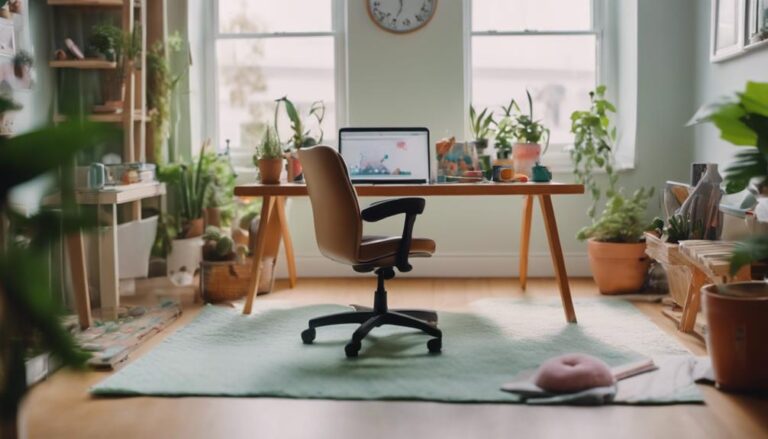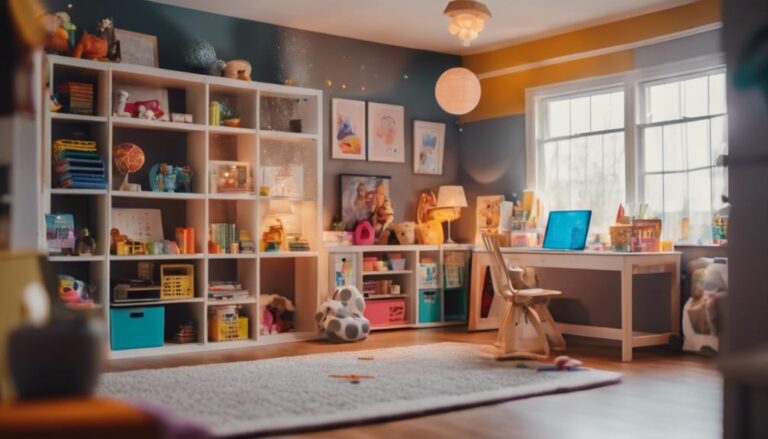When creating a kid-safe workspace, I always start with safety. Using furniture with rounded edges and making sure the area is well-lit and quiet helps avoid accidents. Next, I opt for durable materials like solid wood and laminate, which stand up to wear and tear while being easy to maintain. Finally, I encourage creativity by providing art supplies, colorful decor, and a designated area for their creations. These tips guarantee the workspace is not only safe and durable but also a place where a child's imagination can thrive. Stick around to uncover more details and practical advice.
Key Takeaways
- Choose furniture with rounded edges to minimize injury risks.
- Use solid wood and metal materials for furniture to ensure durability and safety.
- Incorporate anti-collision technology to prevent accidents and enhance safety.
- Create a well-lit, quiet workspace to improve focus and reduce distractions.
- Involve children in the design process to tailor the space to their needs and preferences.
Prioritize Safety First
When establishing a kid-safe workspace, it's important to make sure that all furniture has rounded edges and anti-collision technology to prevent accidents. In a Kid-Friendly Home Office, safety starts with the basics.
I confirm our study space is in a well-lit, quiet area to reduce distractions and enhance focus. By involving my children in the design process, we create a personalized environment that reflects their interests, whether it's in the living room or a dedicated arts and crafts corner.
Investing in ergonomic furniture, like FlexiSpot's SD2 and SD8 desks, ensures comfort and promotes productive study sessions. Prioritizing safety not only gives me peace of mind but also creates a nurturing space for my kids to thrive.
Choose Durable Materials
Choosing durable materials like solid wood or metal guarantees that our kid-friendly workspace can withstand daily use and rough play without quickly wearing down. It's essential to opt for materials that handle wear and tear, ensuring longevity and safety. Easy-to-clean surfaces like laminates or vinyl simplify maintenance, while scratch-resistant finishes keep furniture looking new. Stain-resistant fabrics, such as leather or synthetic blends, are practical choices for maintaining a clean and functional environment. Prioritizing non-toxic, eco-friendly materials also enhances safety, creating a healthy space for children.
| Material | Benefit | Feature |
|---|---|---|
| Solid Wood | Durability | Withstands rough handling |
| Metal | Longevity | Resists wear and tear |
| Laminate | Easy maintenance | Scratch-resistant |
| Vinyl | Practicality | Easy to clean |
| Synthetic Blends | Safety | Non-toxic, stain-resistant |
Encourage Creativity
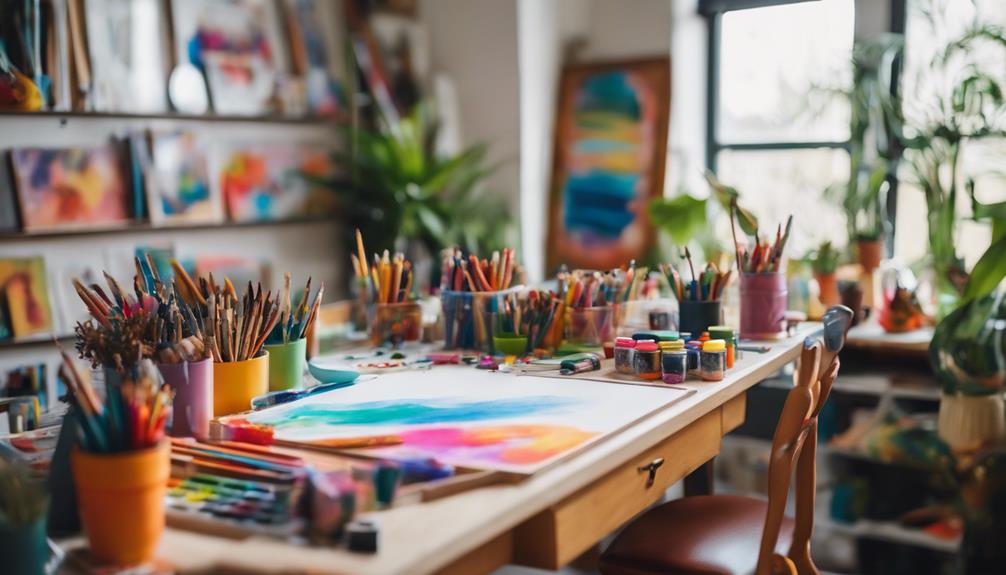
Fostering creativity in a kid-safe workspace is essential for nurturing a child's imagination and cognitive development. As a graphic designer, I've seen firsthand how providing art supplies and creative tools can boost self-expression and innovative thinking in younger children.
Make sure to include playful elements like colorful decor and fun furniture to stimulate creativity and joy. Offering a designated art area encourages hands-on exploration and artistic growth. Displaying children's artwork prominently not only inspires confidence but also instills pride in their creations.
You'll be amazed at the great job they do when they feel their work is valued. By incorporating these elements, we create an enriching environment that supports and celebrates your child's creative journey.
Frequently Asked Questions
What Are the Main Considerations While Designing a Kids Room?
When designing a kid's room, I prioritize safety features, vibrant color schemes, and engaging play areas. Practical storage solutions are essential for maintaining organization. Balancing these elements creates a stimulating, safe, and functional environment for growth.
How to Design Spaces for Kids?
Designing spaces for kids is like crafting a magical kingdom. I use vibrant color schemes, interactive elements, practical storage solutions, and flexible furniture to foster creativity and adaptability, ensuring their room grows with their imagination and needs.
How to Design a Kid Friendly Home?
When designing a kid-friendly home, I focus on vibrant color schemes, smart furniture choices, and practical storage solutions. I also create engaging play areas, ensuring the space is both functional and fun for the kids.
How to Create a Safe Space at Home for Kids?
In order to establish a safe space at home for kids, I guarantee childproof furniture, prioritize electrical safety, use accessible storage, and choose non-toxic materials. Providing a nurturing, innovative environment that promotes both safety and creativity is crucial.
Conclusion
So, there you have it, folks. If you don't want your kid's workspace to turn into a disaster zone, prioritize safety, pick materials that can withstand a hurricane, and let their creativity flourish (without turning your living room into an art gallery).
Trust me, I've been there—scraping glue off the walls and wondering why I thought white carpet was a good idea. Follow these tips and save yourself a few gray hairs.

